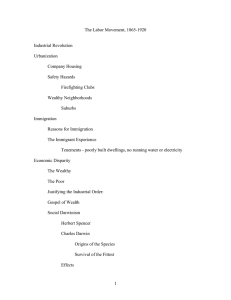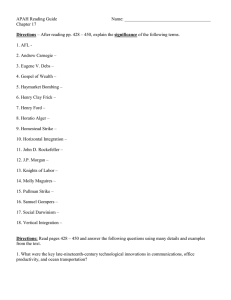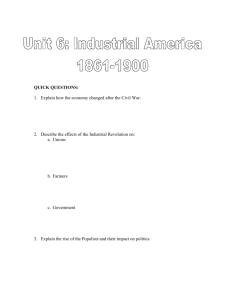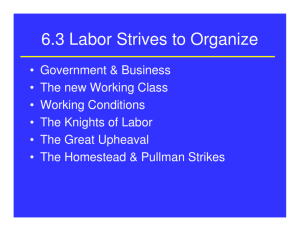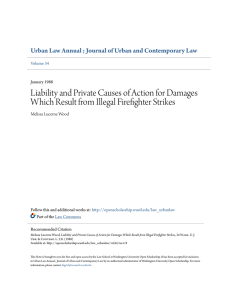Labor Movement
advertisement
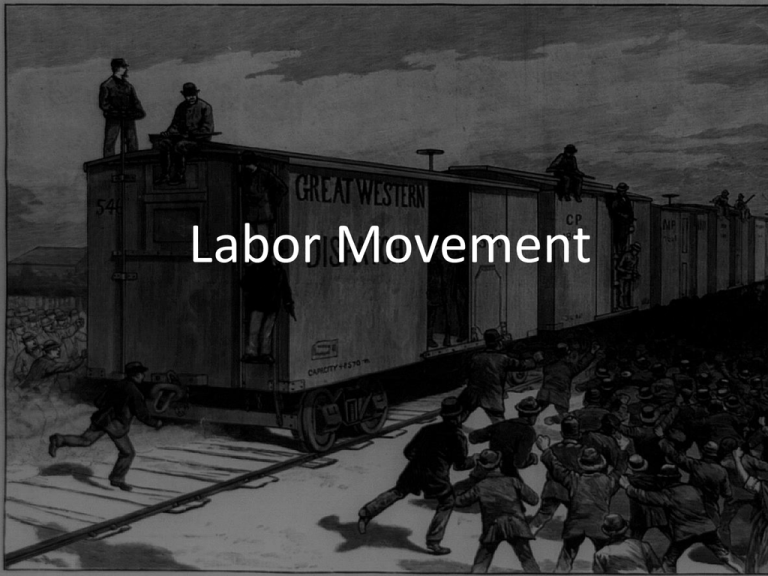
Labor Movement A. Unions 1. What is a Union – Union is an organization of workers – Come together for a common cause in the workplace 2. Why Form Unions – Strength in Numbers – Much easier for workers to join together to make changes than to do it separately B. Knights of Labor 1. Who are they? – 1869 first major national labor organization – Opened to all who “toiled” – All workers including women and African Americans – Leader Terrance Powderly – Encouraged “collective bargaining” not strikes 2. Goals – 8-hour day – Saving public lands for actual settlers – Prohibition of child labor – Equal pay for the sexes – Adoption of a graduated income tax – Government ownership of the railways and telegraphs C. American Federation of Labor 1. Who Are They? – 1881-present – Representing skilled labor only – Most powerful leader Samuel Gompers 2. Goals – – – – – Similar to Knights of Labor Better wages, 8 Hour Day Better Working conditions Would use strikes to get these D. Strikes 1. Homestead Strike – 1892: Homestead, PA – Carnegie Steel Cut wages – Amalgamated Union Workers strike – 300 Pinkertons (private security guards) called in – 3 guards and 10 strikers killed – State Militia called in to break strike – Strike ends and Union is weakened 2. Pullman Strike – 1894 – Pullman Palace Car Co. Chicago – Wages cut by 28% – Workers Strike – Pres Cleveland sends in 12,000 troops – Says the strike interferes with US Mail – Strike ends 3. Great RR Strike – Started with the Baltimore and Ohio RR having their pay cut. They walked off the job. The Penn RR and others joined in. – The state militia was called out. They shot at the strikers killing some. Eventually the army was called in to start the trains again. Over 100 people had been killed. 4. Haymarket Riot – In Chicago, a group protested police violence against strikers. A bomb was thrown into the crowd killing 11 and injuring many. – The foreign protesters were blamed. 8 were arrested and sentenced to death. 5 weren’t even at the riot.

